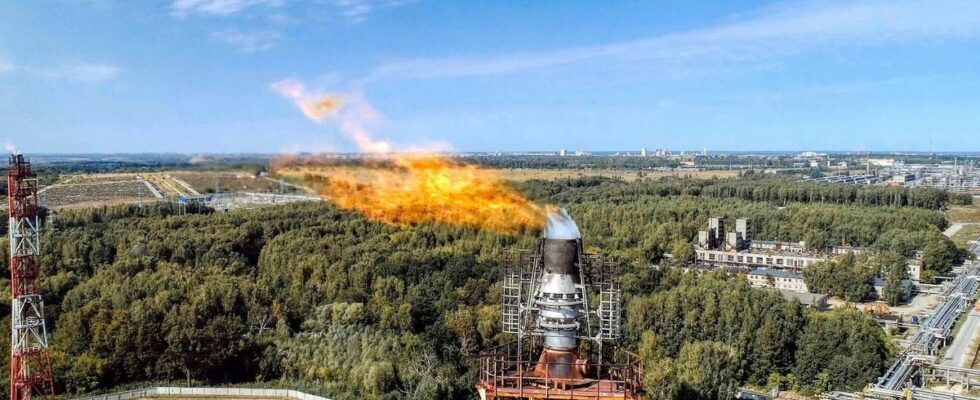Published on
updated on
Reading 2 min.
Concentrations of greenhouse gases in the atmosphere have reached new records in 2023, which will inevitably lead to temperature rises in the coming years, the UN warned on Monday.
Levels of the three main greenhouse gases – carbon dioxide (CO2), methane (CH4) and nitrous oxide (N2O), which contribute to global warming – all increased further last year, according to the World Meteorological Organization (WMO).
The UN weather and climate agency noted in particular that CO2 was accumulating more quickly than ever in the atmosphere, with an increase of more than 10% in two decades.
“Another year. Another record. This should ring alarm bells among policymakers. We are clearly behind the Paris Agreement target” on climate change in 2015, said Celeste Saulo, WMO Secretary-General.
The countries then agreed to limit global warming to less than 2°C compared to pre-industrial levels, and even to 1.5°C if possible.
The WMO’s annual greenhouse gas report is released ahead of COP29, the next UN climate summit from November 11-22 in Baku, Azerbaijan.
As long as emissions continue, greenhouse gases will continue to accumulate in the atmosphere, increasing temperatures, the WMO laments.
Already, global temperatures on land and at sea in 2023 were “the highest ever recorded since 1850”, she underlines.
And given the lifespan of CO2 in the atmosphere, current temperature levels will persist for decades, even if emissions decline rapidly to net zero.
In 2023, concentrations of CO2 would reach 420 parts per million (ppm), those of methane would reach 1,934 parts per billion (ppb) and those of nitrous oxide would reach 336 ppb.
Or respectively 151%, 265% and 125% of the levels of 1750 (+1 point in one year for the three gases).
“Real impact on our lives”
“These are more than just statistics. Every part per million and every fraction of a degree of temperature increase has a real impact on our lives and our planet“, declared Ms. Saulo, quoted in a press release.
Concerning CO2, responsible for around 64% of global warming, the increase of 2.3 ppm observed in 2023 is the 12th consecutive annual increase above 2 ppm – because of “historically significant CO2 emissions from fossil fuels in the 2010s and 2020s“, according to the report.
“CO2 is accumulating in the atmosphere faster than at any other time in human existence“, warns the WMO. The Earth experienced such a concentration of CO2 3 to 5 million years ago, when the temperature was 2 to 3°C higher and the sea level was 10 to 20 meters higher. higher than today, she recalls.
Just under half of CO2 emissions remain in the atmosphere, while the rest is absorbed by ocean and terrestrial ecosystems.
But today,”we face a potential vicious circle“, warns Ko Barret, Deputy Secretary General of WMO.
Climate change itself could soon “cause ecosystems to become greater emitters of greenhouse gases“, according to her.
Wildfires could release more carbon emissions into the atmosphere, while warmer oceans could absorb less CO2. As a result, more CO2 could remain in the atmosphere and accelerate global warming, she warns.

